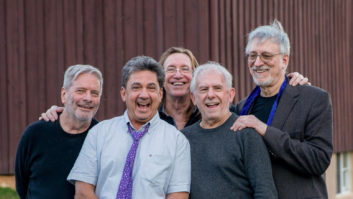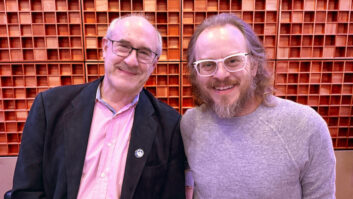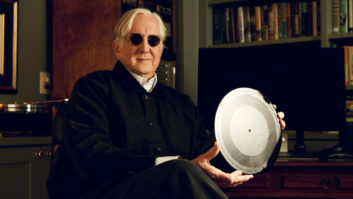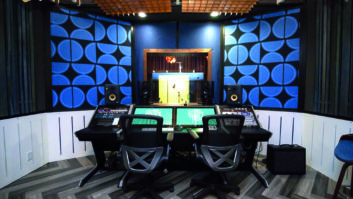Over the course of his long career, Garland Jeffreys has set his music to a broad range of styles and socially conscious themes. His new album, The King of In Between, is no exception to this, with songs like “Love Is Not a Cliché,” or “Coney Island Winter,” a poignant tune aimed at politicians who say they are going to “fix this town.”
A New Yorker through and through, Jeffreys’ music emanates a soulful grit, while ringing true with authenticity. Co-produced by Larry Campbell (Levon Helm) and mixed by the legendary Roy Cicala (John Lennon, Bruce Springsteen), The King of In Between is reminiscent of Jeffreys’ earlier work, particularly 1977’s Ghost Writer, in that the sessions were done with mostly live vocals and a spontaneous approach. Pro Sound News spoke to Jeffreys about what it’s like to be “King.”
On the “Right Kind of Song”
For me, it’s about being here at home and working with my guitar to come up with the right kind of song. The right kinds of songs are always meaningful; they don’t always have to be serious, but they are meaningful. I work very hard at getting the best songs I can get first, and then I try to make very rough demos, without trying to be too perfect. It usually takes me about 30 high-level songs before I make a decision about what’s best, what I am saying here, and what the theme is. I like to work off of a theme, because I think that’s what songwriters do.
I remember in the early ’90s someone told me that you don’t ever have to make a bad album again. Your obligation to yourself is that every time you record a song, it’s got to be the best you can do. I agreed with him, but the challenge of it is very tough. The two songs that I wrote at the end were “Love Is Not a Cliché” and “Coney Island Winter.” These happened in one day. I recorded them with the vocal in one day. When you get that kind of experience, it’s a wonderful gift.
On Assembling a Band
For this album, I thought about Larry (Campbell) and Duke (Levine) on guitar. They had played together and knew how to play together as two guitars. Larry came over to my place, he listened to some songs and liked them. Once we went into the studio and assembled a band, I knew I wanted Steve (Jordan) on the album, who has played with me before, and who is such a hard worker. Larry then suggested Brian Mitchell, who I had heard play accordion and organ at Levon’s (Helm), and I thought he’d be great. So we assembled a team of players; we went into Brooklyn Recording, went over a song or two, and then recorded.
A lot of the songs were done in one take with a vocal. In fact, the vocals are live in most of the songs—I love it that way. My Ghost Writer album was all done with live vocals, and this album is very reminiscent of that in the way it was recorded. All the players had the demos in advance, so they had a feel before going in. To get things moving, it was as simple as gelling the players. Larry and Steve kind of became leaders in the group. It was easy for us to know when we had a performance, and in certain cases, we got two takes down and would go for one or the other.
On Working at Brooklyn Studio
All the players were in a room where everyone could see one another. We had baffles set up in the live room, and I was the only person in an isolation booth. I wanted the most separation I could have on the vocal, and we ended up having no problems whatsoever. On the lead vocal, I used a Neumann U 67; I also like the Neumann U 47. These are the two main microphones I use on the vocals, but anything is fine just as long as my voice is captured naturally.
I don’t worry about the technical side in the studio. I work in studios with people who know all about that stuff. In the past, I did three albums with Bob Clearmountain, which he engineered and mixed. I remember what I liked was that Bob revealed the sound of the song right up there on the board. I thought, “Wow, I am working with the right guy, and everybody is playing so great.” Here at Brooklyn on this album, Andy (Taub) and his team did a great job. There is nothing like hearing yourself back and being pleased. On this particular album, I was looking for warmth, and it was all there. I was thrilled about the sound.
On Working with Roy Cicala
Roy Cicala of The Record Plant did the mixing. He’s got an amazing resumé having recorded John Lennon’s Walls and Bridges and all these other great records. Roy is a true master, and he mixed the album down in Brazil with a lot of his original gear. We mixed over the phone, through the web, sending CDs and mp3s back and forth. We had some conflicts, agreements and made some compromises, and it was a bit tedious at times. But that was the way we did it. The process was a little different from the ’70s, but similar in the sense that we did work very closely.
Once I got mixes, I would send stuff up to Larry, who by this time was my co-producer and is very definitive— when he says something, he means it, and you don’t have to second-guess it. It was really very ideal having the three of us working together. After we mixed it, we went to Craig Calbi, who is also a Record Plant follower of Roy. He really did a beautiful job.







